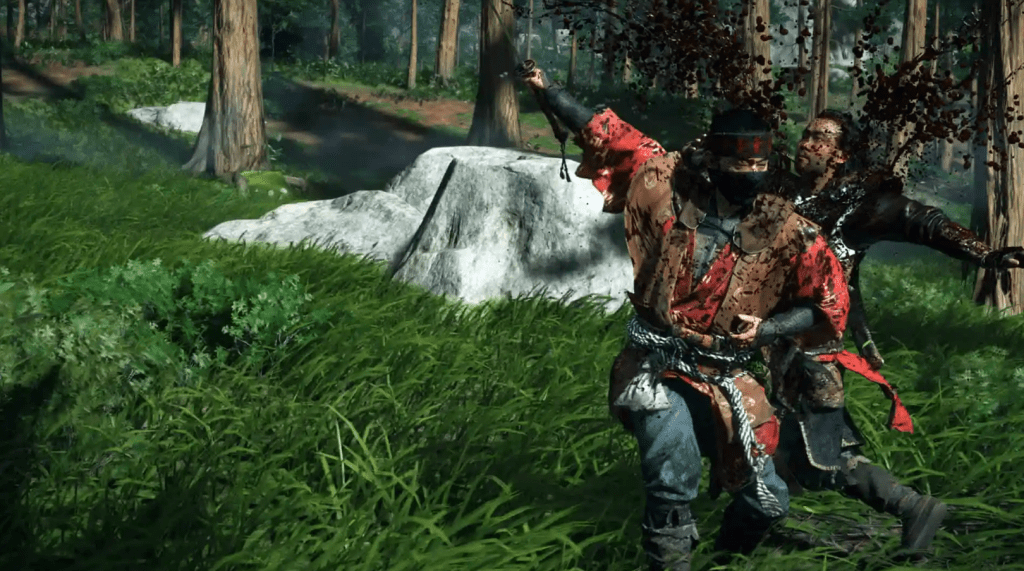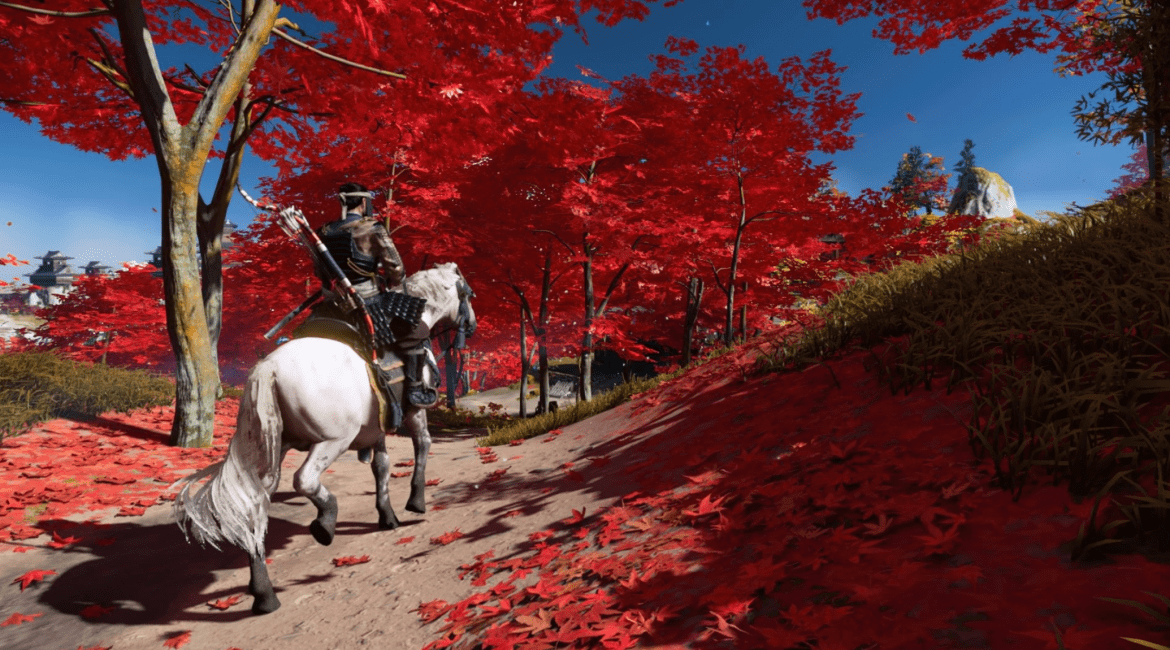Ghost of Tsushima, created by Sucker Punch Productions is an open world game with a Mongol invasion of Japan theme. It has a familiar structure and a buttery smooth combat system. Ghost of Tsushima achieves the Sony Exclusive standards of polish and workmanship, but it is lacking in innovation and polish to compare to other games.
The Ghost
The Ghost of Tsushima is the story of Jin Sakai. He’s a nobleman with a high position who served as a Samurai during the Mongol invasion of Japan. Jin begins to doubt his upbringing and belief system as he adopts underhanded tactics to compete with the military power of the Mongol empire. Jin, who is now the Ghost on Tsushima, becomes a mythical character that inspires fear amongst all, both friends and enemies. Ghost tactics can include sneaky indirect action, assassinations and the use of sneaky instruments.

Before the release of the game I wasn’t too excited about the story of an honorable warrior. However, the tale has evolved from this initial premise into something much more interesting. The honor storyline was predictable, not because of its historical or cultural accuracy. Ghost of Tsushima proves that this conflict can be taken further in the first act. The story’s core was still to challenge the teachings on honor. However, it also shows the greyness in the concept of honor when only those with affluent and privileged positions enforce honor. The story reinforces that honor is not just a “Good and Rigid” vs. “Bad but necessary” framework, but that the honor taught by samurai classes in Ghost of Tsushima is actually a superficial farce.

Tsushima is a beautiful island with a brilliant sky.
This game’s atmosphere is one of its most impressive achievements. The music and wind would take me completely by surprise. Sucker Punch understood how crucial it is to absorb those moments, and they designed the game accordingly. It is stunningly slick, while still maintaining just the right amount of info to convey to players in an open-world. The number of waypoints is drastically reduced, and they are replaced with immersive and diegetic directions. This is one of my favorite solutions to “staring at the waypoint too long” that I’ve seen in other open world games. In the design, they highlight the beauty of Tsushima by having you interact with the island. The lush green fields and composed mountain ranges can be truly appreciated.
The technical feat that is Ghost of Tsushima cannot be denied. Its dense foliage, which reacts dynamically with the wind navigations and the lighting that bounces off the leaves in realistic dense forest settings gives the illusion that the island Tsushima breathes. It is easy to make up for the lack of diversity in the creatures and beings that inhabit the world by how many parts of it feel handcrafted. The island is a place where almost every corner feels like it has been sculpted into a unique landscape that reflects the cinematic and cultural roots of the Island.
Diegetic Navigation System was the best addition to open world genre. However, there are some flaws. The golden birds, which can guide you to points of interest, are sometimes very difficult to follow as they fly above the view of the camera and collide with the geometry of the world. They also get stuck when flying into walls or other obstacles. The navigation system is too predictable after a while. It loses its sense of curiosity and discovery when it always leads to the same places. And the rewards, although not exciting, are still enjoyable.
Lighting was beautiful but had some issues. The game was difficult to adjust the brightness between dramatic and normal modes. Darks were too dark and brights too bright. It is unfortunate that a game meant to showcase the beauty of Tsushima requires you to spend so much time in its menus.
The island of Tsushima offers little interaction outside of the visuals. There are only a few combats and cutscenes. Other activities include bamboo cutting, haiku writing, or other small tasks. It’s a problem I had with Horizon Zero Dawn that the NPCs are almost limited to the scenery. They offer very little interaction, other than adding people to the scene or hearing bits of dialogue floating in the air. Tsushima, despite its beautiful scenery and clever loading times, offers very little beyond that.

The Precise And Deadly
Ghost of Tsushima’s combat is mainly split into its sword and ghost gameplay. The sword combat is my favorite part of the game. It feels smooth and reactive, but a mistake can cost you your life. The sword combat is best when outnumbered or during the epic cinematic battles you’ll encounter on your journey. Jin’s abilities increase as the game advances, but single enemies are no longer a threat. The counters and parries feel earned. Dodges and evasions can be dangerous as enemies may attack in groups. It took me until the very end of Act 1 to feel like the combat was working. It was clear how dangerous the enemies were before that, and it remains so until the very end. It was a great melee experience, even though it required precision and planning. This is only true if you do not use your arsenal of ghost weapons. Ghost weapons such as kunai and sticky bombs, or smoke bombs, are designed to win battles. These weapons feel satisfying, and they make sense thematically, as you’re supposed to use them against the Mongols. However, because they do not require the same level of decision-making or precision that sword combat requires, these weapons can be abusive and anticlimactic. These weapons can be used in a strategic way that feels great. For example, if you want to round up your enemy for a sticky bomb, or use smoky bombs to escape, they are great. But the situation rarely arises.
Ghost gameplay is mostly functional, and it’s satisfying. The AI feels reasonable and fair. It’s not a special game when it’s working, but sometimes it’s just not. It seems that the AI is not prepared to handle any situation other than hiding and fighting. You can repeatedly assassinate the enemies as they enter a room by walking in through a closed door. They are not prepared to deal with situations where you’re on a platform or ladder. This didn’t happen to me often, but when it happened it was a big deal. If the stealth is working,
The bow has a light-weight shooting mechanism, which is great for most of the game. However, there are a few sections where the archery becomes more like a cover gun, forcing you to fire at enemies from far away. When you are hit, the game will automatically make you stand up and take you out of your cover.
The customization options were a pleasant surprise. Jin cannot be changed, but the game provides a wide range of armors and skills that allow you to create a variety of builds. This allows for a unique playstyle. My playthrough included an archer build, lifesteal, fear, and kunai builds, along with my all-purpose armour set. The gameplay was varied enough by each build.



Leave a Reply